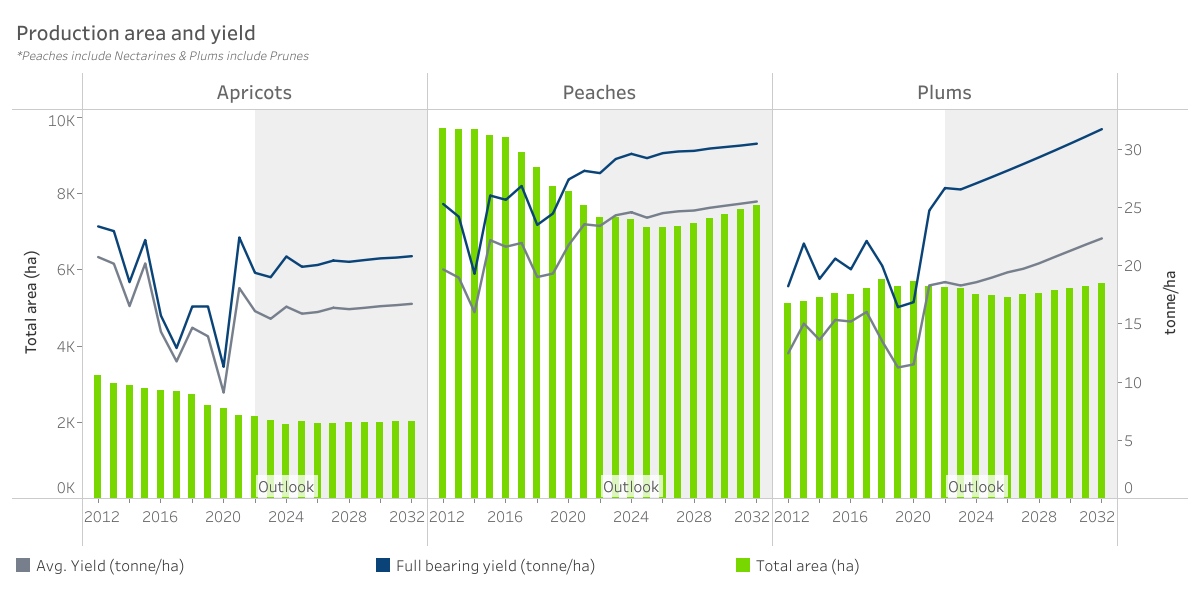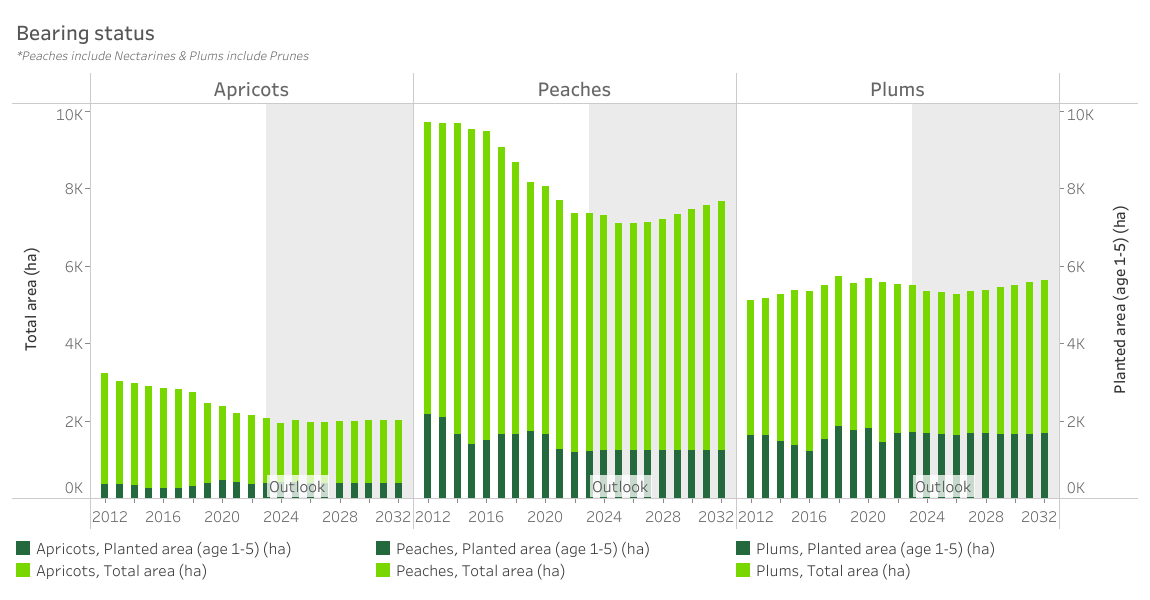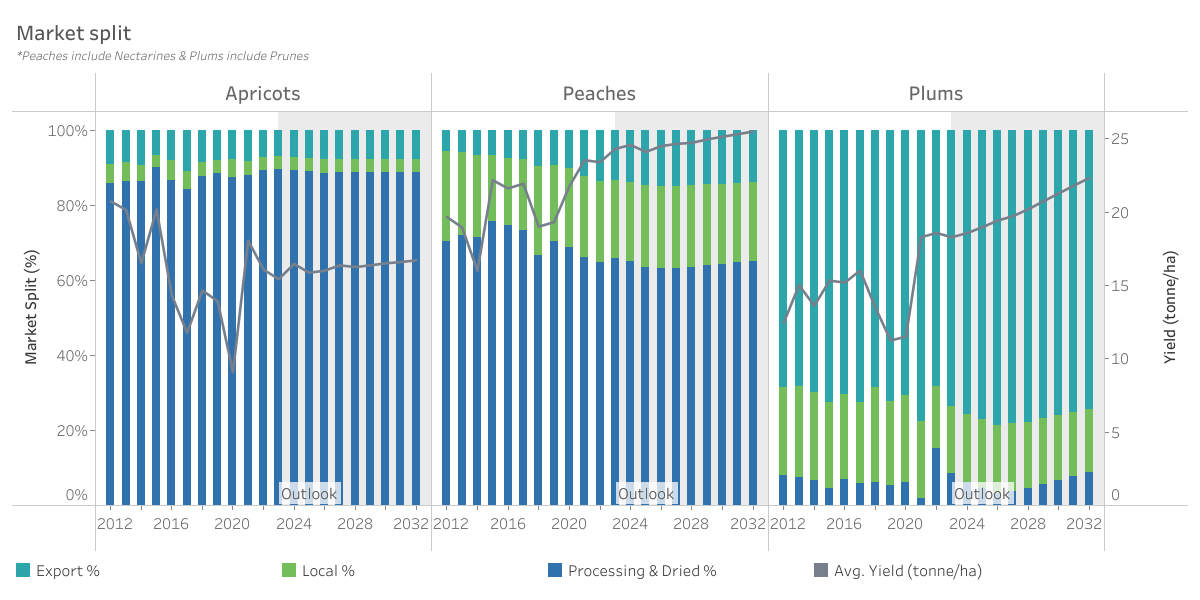Stone Fruit Key Summary Statistics
Summary Statistics

Stone production area and yield

Whereas a slow and continuous decline in area is observed for apricots and peaches, plum area has expanded over the last decade. However, given the lack of sustainable returns in recent seasons on plums, area has started to decrease somewhat. Over the outlook period, apricot area is expected to stabilise somewhat as newer cultivars do well in certain areas that provide producers reasonable returns based on fair yields, good pack out percentages and well positioned marketing windows. For plums and peaches, the downwards trend on area is expected to continue over the first half of the outlook period as the processing marketing channel continues to be constrained for peaches and the returns on plums are under severe pressure. However, as volumes decline and markets recover, an uptick in area over the latter parts of the outlook period is possible.
Bearing status

Despite movement in total area projected, it is expected that a fairly consistent approach to replacement of aging and/or unproductive orchards will remain in place.
Market split

After recovering from the drought affecting water availability and yields in the latter parts of the previous decade, the industry is adapting to a new normal in terms of yields. Record harvests are logged, with a smaller incremental growth rate projected over the outlook period than what has been observed in the last two seasons. Whilst working towards better pack outs, the processing marketing channel remains an important outlet, especially for peaches due to limited other marketing opportunities for certain cultivars. With a fairly flat outlook for domestic sales, the expectation is that the impact of higher volumes over time would be absorbed in the processing market when not suitable for exports.
Nominal and real prices

The volatile marketing environment of the past couple of seasons saw prices fluctuate. Marketable volumes, pandemic related market closures, global logistics disruptions, the invasion of Ukraine by Russia, fluctuating exchange rates and other factors contributed to these price observations. Going forward, the gradual weakening of the rand is expected to aid price growth, with the expansion of marketing opportunities also alleviating the pressure on and concentration in existing markets. In real terms, thus prices adjusted for inflation, the outlook is fairly flat. Consequently, given the cost squeeze already felt throughout the industry, marginal orchards are likely to be replaced. Quality remains a critical factor in these considerations to ensure that volume translates into improved net returns per hectare.